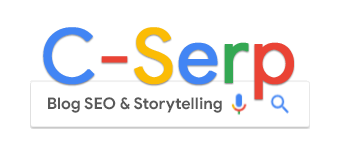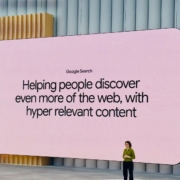How multimodal discovery is redefining SEO in the AI era

The SEO industry is undergoing a seismic shift – one shaped not just by algorithms but also by evolving user expectations.
At the heart of it is a radical transformation in how people search, and Google is adapting in real time.
Between the 2025 Google I/O Keynote and meetings with search experts and engineers, it’s clear: we’re entering a multimodal, AI-powered era of discovery.
At the forefront of this change is that search is no longer just a list of blue links.
It’s a personalized, visual, voice-enabled, and AI-summarized interface designed to anticipate the user’s intent, not just respond to it.
Google isn’t changing search, consumers are
Search behavior has evolved. Users now:
- Expect instant, context-aware answers.
- Ask complex questions.
- Use voice, images, and multi-intent queries.
In response, Google is evolving from a reactive query engine into a proactive AI discovery system.
We are in the midst of a transformation from semantic to retrieval-augmented generation (RAG), and the expectation that consumers (searchers) are evolving the discovery journey.
- “We are doing a better job at answering harder questions that users bring us than we’ve ever done,” said a senior Google engineer during a session at Google I/O. “Learning to search with keywords is no longer as relevant as a person’s ability to express a desire.”
AI Overviews, Gemini-powered queries, and real-time personalization via context from Gmail, Maps, and Calendar now influence results across verticals like travel, tickets, shopping, and SaaS solutions.
These changes are visible and measurable.
But here’s the reality: SEOs who don’t adapt their content, structure, and measurement models will become invisible in this new ecosystem.
Dig deeper: The next wave of search: AI Mode, deep research and beyond
AI Overviews and the decline of the blue link
With the rollout of AI Overviews, Google is now summarizing answers directly, often without requiring a click or even clearly attributing a single source.
While this may improve the user experience, it introduces a new challenge for content creators, SEO, and web development teams.
- “Your entire site can be built on content you didn’t originate – and that’s likely to be a lot less lucrative in the long run,” noted a Google search liaison. “We’re focusing on non-commodity content.”
Google’s updated guidance on “Succeeding in AI Search” was a key theme during the 2025 Google I/O event.
Google’s guidance and recommendations to the web community will continue to emphasize originality, experience, structured data, and actionability.
This new guidance evolves “helpful content” to what I call value-rich content.
This level of content is not only useful but also understandable, attributable, and uniquely valuable, especially when answering layered, context-rich expectations.
It is rewarded in an AI-driven search experience.
Multimodal SEO is the new baseline
Search is no longer text-first.
It’s multimodal, integrating text, images, video, voice, and interactive components in one fluid interface.
Google’s Gemini-powered AI now interprets contextual signals across formats.
To stay visible, your content must be more than just readable: it must be visually and structurally rich.
To win in AI-driven SERPs, you must:
- Integrate schema markup for products, events, how-tos, and FAQs.
- Provide visual assets: annotated screenshots, diagrams, video walkthroughs.
- Include structured media: alt-text, transcripts, labeled entities.
- Design content to support complex, filtered, multi-intent queries.

During Google I/O, Liz Reid and even engineers after her keynote, noted that users are:
- Increasingly interacting with search using complex, multi-step queries.
- Expecting results that include images, step-by-step visuals, or embedded video.
In one example shared during the session, an engineer described how Google’s AI handled a search for comparing rental car gas mileage by surfacing not just summary data, but linking users directly to visual content and deeper reviews.
- “I was doing a query… and it wasn’t done. I just felt like I understood it a bit better,” said a Google engineer. “Then I went onto the site and was more happy to get more.”
Another Googler added that AI reviews are already influencing the type of content surfaced, stating:
- “We’re seeing people going further up the information chain… asking harder stuff. That’s where there’s room for more depth, more unique content, and more distinguished experiences.”
In this context, static documentation or feature articles alone won’t be enough.
If content doesn’t visually show how something works, or provide structured signals that Google can parse across formats, it’s likely to be skipped over in favor of content that does.
This shift isn’t optional – it’s foundational to ranking in a world where search looks less like a listicle and more like a guided assistant.
Dig deeper: SEO in an AI-powered world: What changed in just a year
New KPIs: From clicks to qualified engagement
The era of traffic-first SEO measurement is rapidly coming to an end.
As Google continues to roll out AI Overviews and AI Mode, the ability to track traditional user behavior, such as clicks, bounce rate, and even basic session attribution, is diminishing.
Google has confirmed that clicks from AI Mode are currently untrackable in Google Search Console or standard analytics platforms.
This has major implications. Teams are still being asked to measure SEO success by click-through rates and traffic volume, while the reality is that:
- CTRs are collapsing as AI answers, maps, videos, and paid placements dominate SERP real estate.
- AI features don’t always generate a click, even when the content is cited.
- Search Console doesn’t report on AI Overviews or delineate AI-driven queries from standard ones.
- Privacy changes and user consent models are further reducing visible attribution across GA4 and ad platforms.
As one Googler explained:
- “People just looking for a short answer – that’s probably not that exciting traffic for a lot of sites. But the users asking harder questions? That’s where there’s room for more depth, more unique content, and more distinguished brand experiences.”
This disconnect between what the executive dashboard expects and what the user experience actually delivers is putting pressure on SEO teams, analysts, and web leads alike.
What’s needed is a redefinition of success metrics. Modern SEO KPIs must include:
- Engaged sessions (scroll depth, time-on-content, event triggers).
- Return visitor behavior and repeat engagement.
- Assisted conversions, not just last-click.
- Brand search volume growth, indicating user recall and demand.
- Impression visibility in high-AI surfaces, even if not clicked.
In a world where AI is the first and last touchpoint, the SEO team’s role is to ensure that content is findable, referenced, and trusted, even if it’s not immediately clicked.
For organizations still measuring performance with a 2015 dashboard, this shift in mindset is urgent and existential.
Dig deeper: 12 new KPIs for the generative AI search era
Final takeaways
Google is building a search engine for the future of information consumption, not the past, Wikipedia-style content investments.
Web developers, SEO professionals, and content teams must evolve now or risk irrelevance.
Here’s what we can do today:
- Audit our content for originality and usefulness – ditch commodity content. Change your optimization to focus on multimodal expectations.
- Implement data into the story and use structured data to build a retrieval opportunity for search and consumers. Data is no longer about coverage on a page, it is about relevance and how well it maps to intent, context, and AI-driven summarization.
- Design for discovery. Don’t assume the user will read; they might ask, watch, or scroll visually. Deeper expectations are critical in our SEO and content planning. Keyword research is not a linear expectation of volume to traffic. We must expand our expectations to research consumers and experiment within content to ensure the right design for discovery.
- Align KPIs with engagement and outcomes, not just rankings! This has become a rallying cry across the SEO industry, but its implementation is complex and unique to each business and website. Turning this principle into practice is a critical mission for both SEO and web teams moving forward.
Most importantly, embrace the complexity with AI search optimization.
The future of search isn’t just about keywords.
It’s about helping people make better decisions through richer, more intuitive discovery experiences.
The good news?
SEO at large is uniquely positioned to lead in this new era.
No other discipline blends content, data, structure, user experience, and technical systems as seamlessly.
In a multimodal, AI-driven search landscape, SEOs aren’t being left behind – we’re being called to lead.


